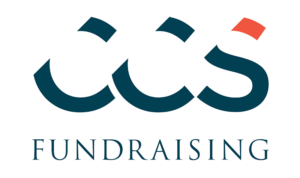How do you make the best decisions on how to prioritize your team’s valuable (and limited) time and resources to maximize your effectiveness in cultivating and closing major gifts?
Sharpen your focus on those who have the greatest capacity to give and make sure you are working with your top and most obvious donors first when prioritizing your valuable time. While a seven-figure prospect who has not responded to repeated outreach may still be a long-term relationship to pursue for many reasons, a consistent five-figure donor who is not yet giving at their seven-figure capacity may be a higher current priority for your organization.
Fortunately, data can inform how to segment donors into short, medium, and long-term focus. Examining the intersection between Recency, Frequency, Monetary Value (“RFM”) and wealth screening is the simplest way to start narrowing your prospect pool to focus on those who are both closest to you and have capacity. When those very basic results are combined with relationship mapping and engagement analysis, they form the foundation of a strong plan to increase major gifts.
RFM: What is it and why would we do it?
A Recency, Frequency, Monetary Value (“RFM”) analysis is the scoring of current donors to rank and prioritize your database through three attributes: recency, frequency, and volume of giving. It can help you answer many questions, including: Who has given recently and is with you right now? Who has given over time and demonstrated loyalty to your cause? Who are your top lifetime givers?
Questions to Answer
Before getting started on your analysis, you’ll want to ask yourself the following questions:
- Would I like to measure total lifetime giving or total giving within the past certain number of years (e.g. the last 10 years)? This will inform how you set up your RFM key, described in the guide.
- Do I have enough information about each donor to complete the analysis? You will need name, database ID, the date of their last gift, the number of times that they have given (lifetime or within the time frame you decided), and the amount of their giving (lifetime or within the time frame you decided).
- Who will I use to screen my data? There are many vendors; which one you use is less important than knowing that you are aiming to focus on those closest to you with identified capacity and knowing that using publicly available data is one helpful tool to inform that decision.
How to Perform an RFM Analysis
You have followed along and may be wondering, how exactly does one perform an RFM analysis? Jessica Roberts, Assistant Vice President of Data Analytics at CCS, can help! Jessica has used advanced analytics to advance nonprofit fundraising for over 15 years and has put together a step-by-step guide here: How to Perform an RFM Analysis. For questions about the process or donor analytics more broadly, contact Jessica and CCS’s Data Analytics Team at analytics@ccsfundraising.com.
Wealth Screening: Another Tool in the Quiver
There are many vendors who can screen your data for pennies per name, and many organizations already have access to built-in screening through database subscriptions. While wealth screening is not perfect (every screening turns up a million-dollar donor with low identified giving capacity), it can be very directionally important. The consistent $1,000 donor who gave last year with a capacity to give $1M+ that you never thought about is one ideal outcome of this exercise for short-term focus. Those who screen as high capacity but have limited giving history or are currently unassigned to a portfolio can be reviewed for relationship mapping or discovery meetings to advance long-term goals.
Other Recommendations
- Whether you have 50 front-line fundraisers or are a one-person show, there is some number of people that you can realistically connect with each quarter. Determine your unique number, and create filters in an excel spreadsheet that contains your RFM and wealth screening results to exclude lower capacity and lower RFM scores until you get there.
- We have found that the most robust results of an RFM analysis occur when they are used to inform community engagement and donor request strategies.
- Having clean data is important. Performing an RFM analysis could be an excellent opportunity to organize and update your data to maximize the accuracy of your results.
- Harness the power of your data by asking yourself, “What do I want to know about donor behavior?” Your questions can likely be answered by increasing data gathering and exploring advanced tools for data-driven fundraising solutions.
How can we help you?
CCS offers an array of Data Analytics services to help nonprofit organizations reach their full fundraising potential.
